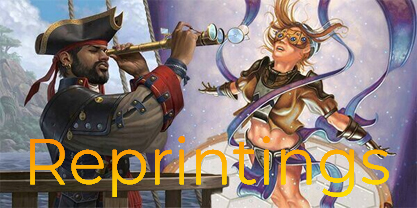Sources
The main sources where I got my pricing information from were tcgplayer.com and mtgstocks.com. All of the charts were from mtgstocks, and the majority of the card images and prices were from the median prices on tcgplayer. I believe tcgplayer is a reliable source to derive value data from because it is the largest user-driven card seller on the secondary market for Magic: the Gathering. Mtgstocks was the best choice for the data processing and chart use and creation because they have the most comprehensive data for card prices and cleanest looking layout. I also used several articles from major MtG news sources and community hubs such as mtgsalvation.com, tappedout.net, mtgprice.com, quietspeculation.com, mtggoldfish.com, reddit.com/r/mtgfinance, channelfireball.com, and tcgplayer.com's articles.Methodology
The main method I used to predict the future trends of cards was first by analyzing what constructed decks were using the decks on mtggoldfish.com. I then used edhrec.com to see what EDH decks were commonly playing the card to determine where, if anywhere, the cards were seeing play. I then used various databases and cardsearch tools to find cards with similar effects, which was almost always successful due to the more than 16000 cards printed throughout Magic's history. I could then use price analysis sites to find the trends the similar cards underwent to predict if the card would increase in price, decrease, or stay stable. I also researched whether the card fit any characteristics of special case cards that went through some of the Magic specific phenomena such as reprintings to help my decision to classify the cards as buys or sells.Works Cited
mtgstocks.com tcgplayer.com quietspeculation.com blog.mtgprice.com reddit.com/r/mtgfinance channelfireball.com tappedout.net mtggoldfish.com edhrec.com magic.tcgplayer.com
Copyright 2017 Ian Rickles







